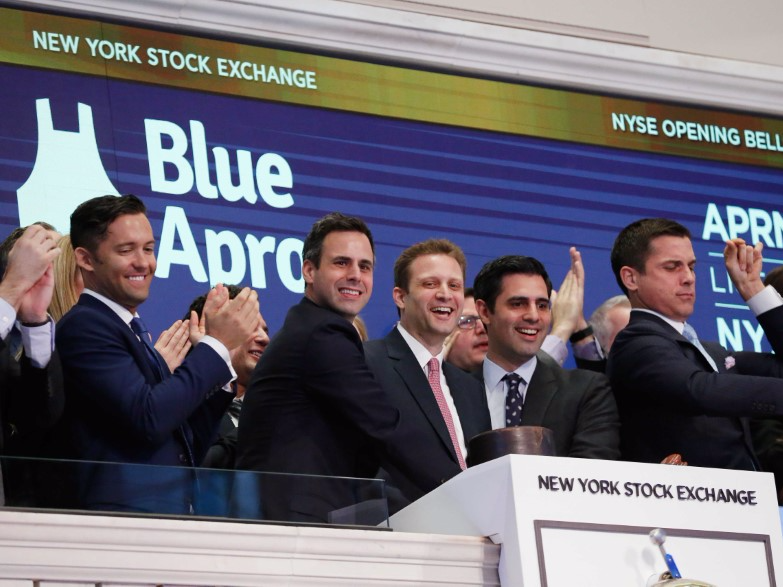Last week I talked about the fact that leaders are under pressure to deliver results. High performance is expected, as it should be. The pressure can be tremendous, especially if you work for a publically traded company that needs to deliver results to its shareholders on a quarterly basis. Many start-up companies face a similar challenge. Their investors want to see a return on their money. Owners, leaders, and employees are pressured to make it happen…quickly. My last blog post described a troubling trend – what happens when leaders hit the easy button instead of implementing comprehensive solutions that address complex challenges. This blog post will describe another troubling leadership trend I see – tactical execution without a good long-term strategy.
Driving without a destination- fog ahead
When leaders obsess on short-term results they tend to miss the bigger picture. This approach drives what I would describe as tactical tunnel vision versus maintaining a long-term focus. It is not uncommon to watch leaders deliver tactical results despite the fact that they have no real long-term strategy. Everyone is in a hurry to get somewhere fast, but the destination some are driving towards is unknown.

Is your team on the road to nowhere?
It is analogous to getting in your car and starting to drive without a clear idea of where you are going. There is nothing wrong with pushing hard to get short-term results as long as it feeds into a long-term strategy that moves the organization forward towards a clearly articulated vision. One without the other can be dangerous and may backfire. Let’s take a look at one example.
Example – an innovative way to feed your family
I do not like grocery shopping. It is boring. Big store, too many choices, and the same items on the shelves every time you visit. It is rare that I am excited to go to the grocery store. I consider it a necessary evil. I doubt I am alone in this dislike. But, all of us have to eat, and the grocery store is the only real affordable option. Eating out all the time gets expensive. Recently several new companies created an innovative solution for people like me.
They deliver meals to your home
They send the ingredients and recipes you need for a few meals a week. The amount delivered is measured so that you do not have to deal with a large pile of leftovers. Great idea. I decided to give these services a try to see if they were worth it. My plan was simple – I would try several different companies to see which one was the best. I learned a lot during this experiment.

Everyone gets a discount – especially your friends
As many of you already know there are several companies to pick from when it comes to home meal delivery. Blue Apron, HelloFresh, Plated, Home Chef and Sun Basket to name a few. I actually tried each of these for at least a few weeks. All of them were decent, but I ran into issues with all of them. I could tell right away that they were focused mainly on delivering tactical results – increasing their number of customers. Get people to join. They lack a good long-term strategy. I noticed that all of them were offering discount prices to get customers to subscribe, but they would try to jack the price up as soon as possible. They sent coupons in order to get me to encourage my friends to sign up.

Hard to compete on price alone
It became obvious that there were problems with their pricing model. If your company has to use discount pricing all the time to attract customers you are creating a commodity market – the lowest price wins. This pricing approach will attract other commodity companies into the market – like Amazon and Wal-mart. When they do we all know how that story ends – not well for the little guy.

It was super easy to join
The second thing I noticed is that their customer service model was not well designed. It was really easy to sign up for the service. Their online sales funnel was optimized. The problems started to surface after I became a customer. It was a challenge to modify the frequency of deliveries, to delay delivery, and really difficult to stop the service. The website hid the section that described how to stop the service. You had to search hard to find the details. In fact, more than one of the services made me call to cancel the subscription. You could not cancel online.
Lock the door – you can enter but never leave…bad strategy
Let me get this straight – I can join in a jiffy online but have to call your company and wait on the line to quit. No thank you. Not a good customer retention model. It started to feel like I was staying at the Hotel California where “you can check out but never leave”. The third problem was that the quality of a few of them was just not there. They were struggling to keep pace with the demand they were creating. The food delivered was not bad, but it was not worth the price they demanded. In the end, I decided none of them was great.

Trying to please Wall Street – swimming with the sharks
Probably the biggest misstep in the meal kit delivery market was made by Blue Apron. They were in a hurry to get Wall Street investors behind the company. Their leadership decided to pay attention to Wall Street rather than optimize their supply chain operations. They were not ready for prime time. Instead, they focused on increasing their customer base so that they could make a splash when they conducted their IPO. Here is a quote from a Richmond-Times newspaper article that explains the problem.
Blue Apron’s IPO was going to be a moment to celebrate — validation for the mushrooming food delivery industry. Behind the scenes, however, all was not well. A new fulfillment center was months behind schedule and still wasn’t ready for prime time six weeks before the IPO.
If your company is in the delivery business, then one would think that leadership would be laser-focused on making sure its core process is functioning well. Blue Apron completed its IPO to some fanfare. The company’s stock price and its investors have suffered since then. I guess that throwing money at the problem did not solve it. Rather it exposed the weak link in their supply chain. Time will tell if Blue Apron recovers from this misstep. Oh, by the way, since Blue Apron went public both Amazon and Wal-mart have entered this market. Sharks are in the water. I sure hope the Blue Apron leadership team knows how to outswim the sharks. I doubt they will survive.

Effective leaders play the long game – they have a strategy
Effective leaders understand that a long-term strategy is vital to success. They establish a vision for where the organization needs to go, craft the strategy for getting there, draw a roadmap, and create an implementation plan for moving forward successfully. Next comes execution – the hard part. If there is one thing all leaders know, it is that execution requires a long-term focus.
Real leaders avoid shortcuts
If you choose to shortcut this process then you may pay the price like the example described above. Be a better leader. Take the path less chosen. If you look at some of the most successful companies in the world today, they have a long-term focus. Market leaders like Apple, Amazon, and Microsoft took decades to build. All three are or were headed by leaders who delivered great results year after year after year. They are dominant players nowadays. That did not happen overnight.
There are no shortcuts to true excellence.
Angela Duckworth
ATW! is designed to make you a better leader
I hope you join me on this journey to raise up the next generation of leaders. The world is in desperate need of more great leaders. Women and men who lead with confidence, clarity, and creativity. It’s time to become the leader that your world needs. Let’s go All The Way!
